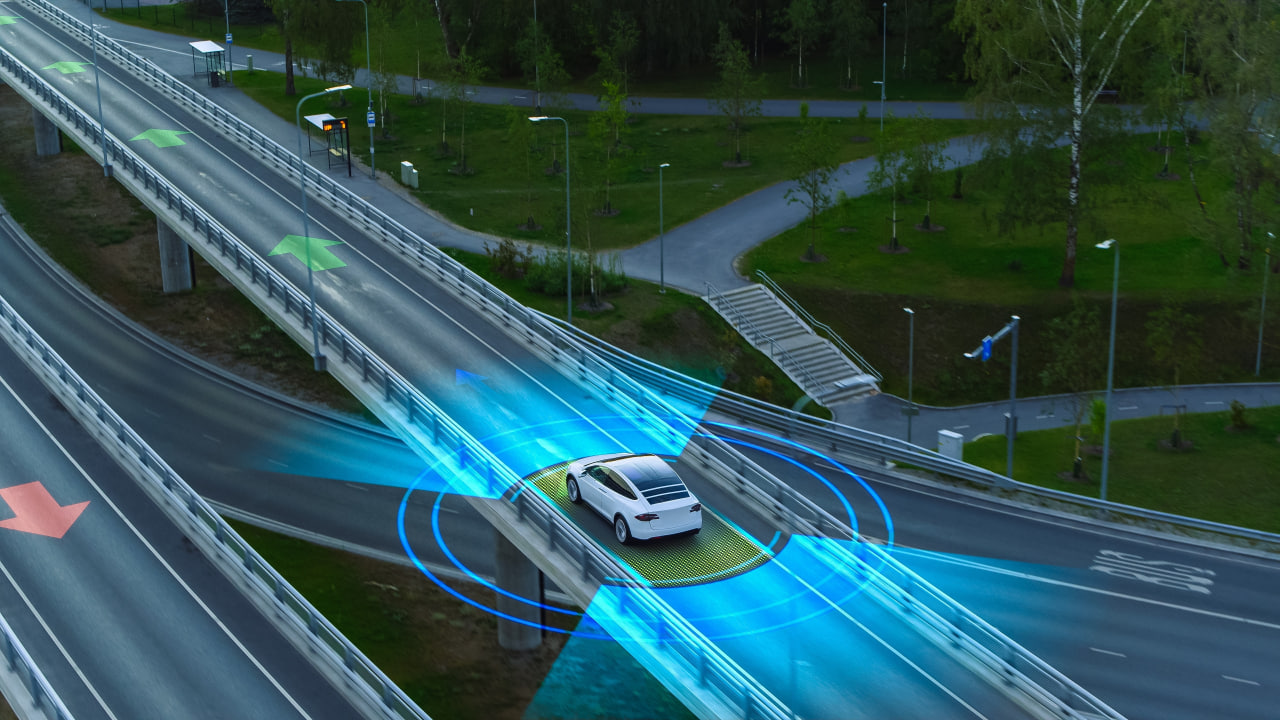
The advent of collision avoidance technology has revolutionized automotive safety, significantly reducing accidents and promoting road safety. By utilizing high-resolution cameras and sophisticated artificial intelligence algorithms, this innovative technology can detect potential hazards in real time and provide drivers with timely alerts and warnings.
The advantages of this technology are significant for individuals, society, and companies alike. Not only does it prevent collisions, but it can lead to substantial cost savings for large fleet owners by reducing insurance premiums, among other things. In this article, we'll discuss how this technology works and how it can help fleet owners protect their assets, enhance operational efficiency, and establish a strong commitment to road safety.
The innovation of AI-based collision avoidance technology
AI-based collision avoidance technology represents a groundbreaking innovation in the realm of automotive safety. By harnessing the power of artificial intelligence, this technology has revolutionized the way potential hazards are detected and drivers are alerted in real-time.
Let's explore some key aspects of this innovation:
-
Vision-based approach - Similar to how human drivers rely on their vision to scan the road ahead, this technology utilizes high-resolution cameras as "eyes" to continuously monitor the environment. These cameras are capable of scanning the road, accurately judging distances from obstacles, and identifying potential dangers.
-
Artificial intelligence - Sophisticated AI algorithms analyze the visual data captured by the cameras in real-time. By mimicking human perception and understanding, the AI can swiftly identify potential hazards, such as pedestrians, vehicles, or obstacles, and promptly alert drivers to take appropriate actions.
-
Proactive hazard detection - By continuously analyzing the visual input, the system can detect critical situations faster than human reflexes, providing drivers with timely alerts and warnings.
-
Real-time alert system - The advanced AI algorithms enable collision avoidance technology to assess the severity of potential hazards and prioritize alerts based on the level of risk. This ensures that drivers receive timely and relevant warnings, allowing them to make informed decisions and take necessary precautions to avoid accidents.
Advanced safety features
AI-based collision avoidance technology encompasses a range of sophisticated safety features designed to detect potential hazards and provide timely warnings to drivers. Let's explore some of these essential safety features and understand how they contribute to accident prevention.
-
Forward collision warning - The forward collision warning system is a critical safety feature that uses AI-powered algorithms to monitor the road ahead. By analyzing the visual data captured by cameras, it can identify objects or vehicles in the vehicle's path.
-
Lane departure warning - By continuously monitoring the vehicle's position within the lane, the system can detect unintended lane departures. If the vehicle starts drifting out of its lane without the use of turn signals, the system alerts the driver through visual and audible cues.
-
Pedestrian & cyclist collision warning - Through advanced image recognition and AI algorithms, the system can detect pedestrians and cyclists in the vehicle's path.
-
Headway monitoring & warning - Utilizing AI algorithms and sensor data, the system continuously measures the distance and relative speed between the vehicle and the one ahead.
-
Speed limit indicator - This feature employs AI-based algorithms to analyze road signs and traffic data, providing real-time information about the current speed limit.
Effectiveness of innovative safety technology in accident prevention
In recent years, the efficacy of innovative safety technology powered by collision avoidance systems in accident prevention has been widely acknowledged. Several studies and research findings support the significant impact of these advanced safety systems in reducing accidents and promoting overall road safety.
According to the Insurance Institute for Highway Safety (IIHS), vehicles with forward collision warning systems had a remarkable 20% decrease in front-to-rear collisions that resulted in injuries. The Journal of Safety Research also reported that vehicles with lane departure warning systems showed an impressive 21% reduction in lane departure collisions that caused injuries.
Along with capabilities such as pedestrian and cyclist collision warnings, headway monitoring, and speed limit indicators, these features work to create a comprehensive safety net, ensuring that drivers are equipped with the necessary tools to prevent accidents and respond effectively to potential hazards on the road.
Reducing costs with advanced safety technology
Accident reduction and improved safety records can yield substantial cost savings for large fleet owners. First and foremost, by preventing collisions, fleet managers can avoid the direct expenses associated with car repairs, replacement vehicles, and related administrative tasks. These cost savings extend beyond tangible financial losses and include mitigating potential indirect losses such as the loss of valuable customers or increased insurance rates following accidents.
Indeed, a strong safety record translates into lower insurance premiums, allowing fleet owners to allocate funds more effectively. Fewer accidents also reduce the need for additional personnel to handle vehicle replacements and repairs, streamlining operations and improving overall efficiency. Moreover, the implementation of AI-based collision avoidance systems cultivates a culture of safe and responsible driving among fleet drivers. This leads to fewer traffic violations, reducing the risk of costly fines and penalties.
The cumulative effect of accident reduction and improved safety records can significantly impact the bottom line for large fleet owners. What's more, the financial benefits extend beyond immediate cost savings to include enhanced overall operational efficiency, improved reputation, and reduced business disruptions. By embracing innovative safety technology, fleet owners can proactively protect their assets, minimize expenses associated with accidents, and establish a commitment to road safety.
In collaboration with STG Digital Marketing Agency
* This is a contributed article and this content does not necessarily represent the views of techtimes.com









